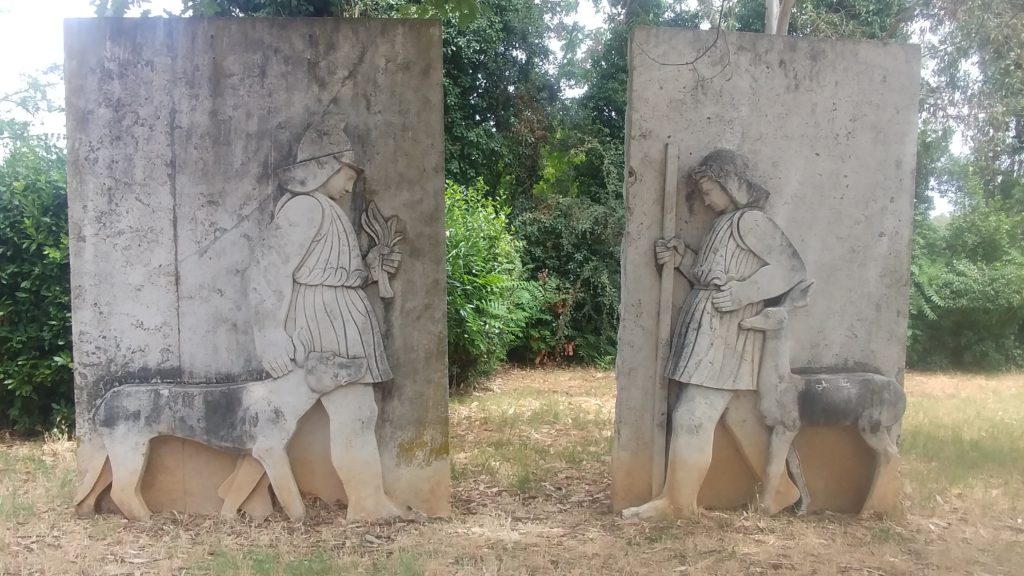Now, nine months into this Roman adventure and I think I’m barely able to comment on our “normal” daily experience of living in a big Italian city. We live in a regular neighborhood away from touristy things, but we’re not too far from them either, for days when we want that kind of thing. And to be fair, there is history around EVERY corner. Of course, our life here will continue to evolve and I am an expert on absolutely nothing Italian yet, but I might (or might not) have figured out a few things. In the following pages I will let you know what I’ve discovered about housing (page 2), food (3), transportation (4), and trash (5).
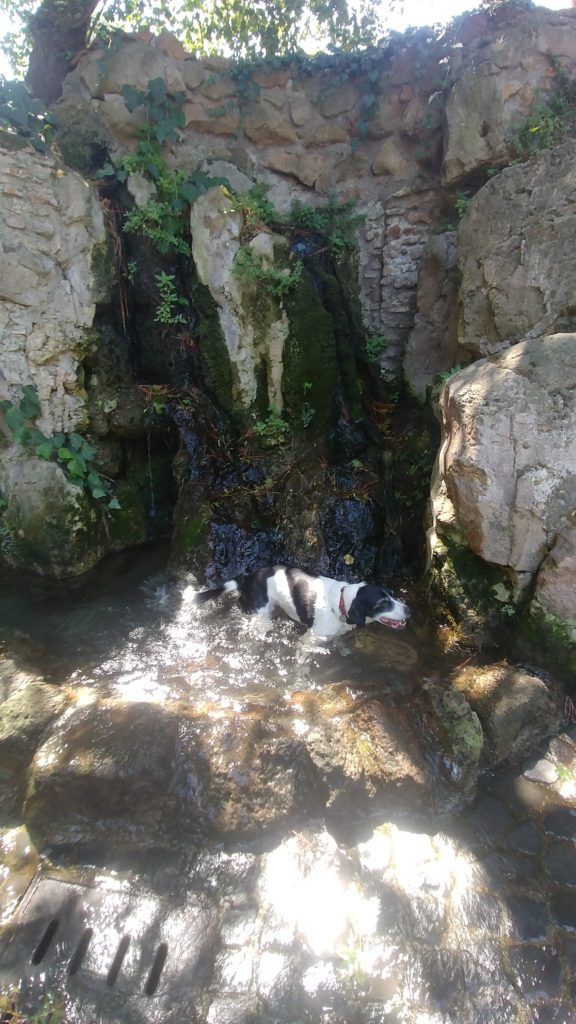
Housing
Most Romans live in apartments/condos in older buildings of less than a half-dozen stories. Most of these apartments come with a doorman. Single-family houses in most neighborhoods in the city are quite rare. We are lucky to have a row house on three floors sandwiched between two apartment buildings. Though some apartments have roof-top decks, balconies, or a small courtyard out back, we have all three. The rooms are small but comfortable and we get lots of exercise on the stairs.
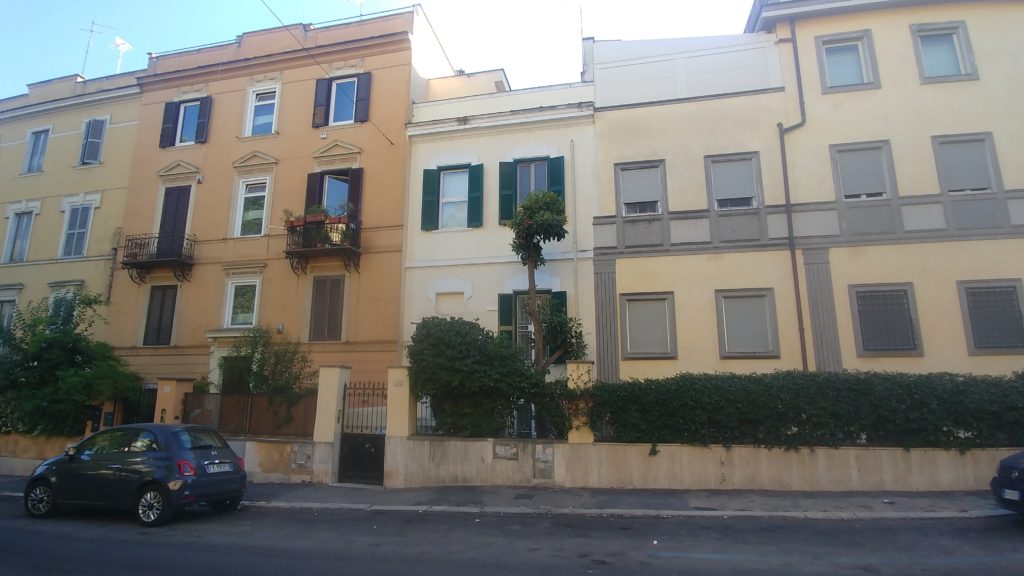
During this warm summer we are still figuring out how to keep cool. It’s all about managing exposure to the sun, since the intensity of heat makes shade a valuable resource. We are always opening and closing shutters and windows as the sun moves from the front of the house to the back. And the roof is uninhabitable from about 2 to 6 pm. We have one functional air conditioner in our bedroom, which is where I am most summer days around 4 pm.
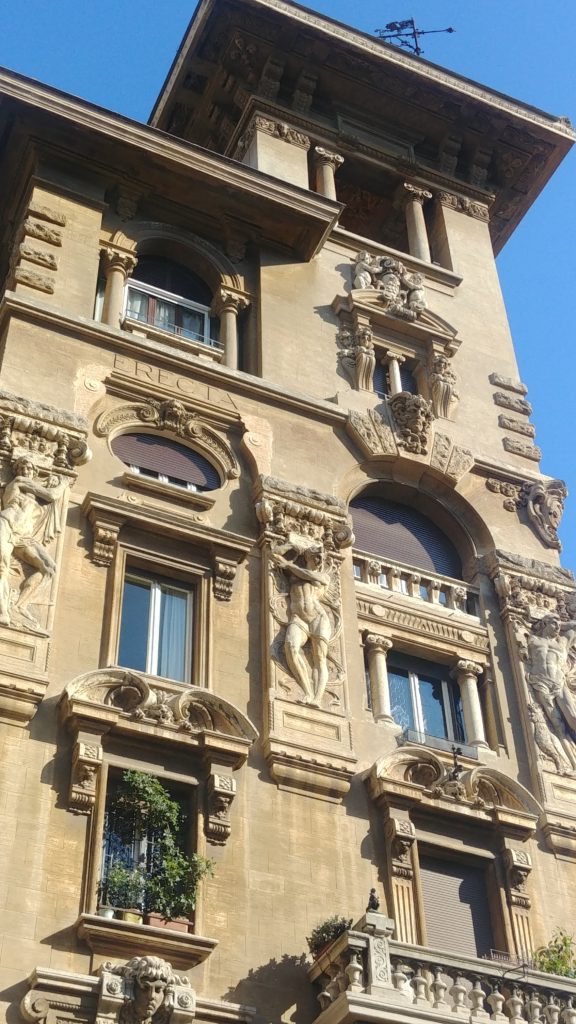
We have a locked gate on the small front courtyard and all the windows on the lower floors have locked metal grates, including the gates that open onto the backyard. I haven’t personally seen any issues but I’ve heard general stories about break-ins. That said, our neighborhood feels safe and everything we need is within walking distance, including two of the largest parks in the city. Ashley has written more about her process in finding this house for us to live in.
Food
Just like living in the States, we are constantly walking the budgetary line between cooking at home and eating out in restaurants. The best idea is to eat at home where it will likely be a bit more economical, but it never works out that way because of social engagements, weekend celebrations, and/or shopping fatigue. On the plus side, groceries are generally cheaper here than in the U.S.
There are three grocery stores, all quite small by American standards, within three blocks of our house and a 24-hour grocery about 10 blocks away. There is also a covered market in the neighborhood, with dozens of stalls selling everything from prosciutto and mozzarella to dog food and laundry detergent. I intended to go to the market regularly and to become known as that guy with the bad Italian language skills, but in reality I tend to go the largest of the three grocery stores because it is closer and is open later.
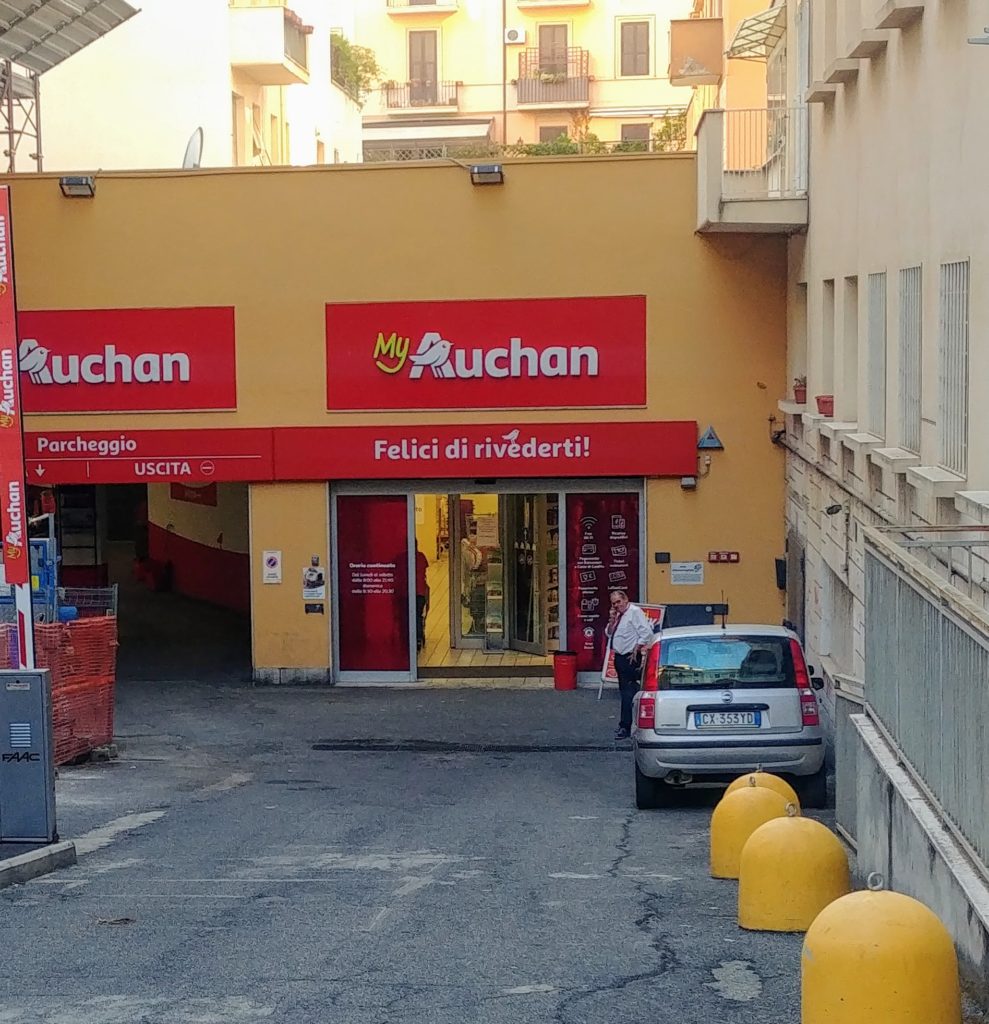
I walk everywhere and bring my own bags to carry stuff home. I usually have to go grocery shopping everyday, because there is little storage space in our kitchen and fresh local ingredients don’t keep very long. My cooking repertoire is limited, but I usually get the basics which now include buffalo mozzarella, water with gas, fresh pasta, and fresh bread. Sometimes there’s meat like chicken, prosciutto, or salami, but our meat consumption is way down. Of course there are specialty shops in the neighborhood too, which I go to when I can. Butchers, fish stores, cheese stores, fruit stores, etc., all within a few minutes from home. My typical daily grocery bill is €20-30.
Of course, whole libraries have been written about Italian food and the restaurants found in Rome. We have lived in our neighborhood now for seven months and we haven’t made much of a dent in sampling the eateries within only five or six blocks of our house, let alone the higher rated places in the city.
We almost never go out for breakfast, though the opportunity for a cornetto (crème-filled croissant) and coffee (~€1) is boundless with a “bar” less than a block in every direction of our house. We have become quite selective in our cornetto consumption and our favorite cornetti are about four blocks away. For lunch, it’s a short walk for panini, falafel, or “rectangular pizza by weight.” But, just like in the US, I often end up with the prestigious job of consuming our leftovers from the night before.
Afternoon gelato is a bit of a challenge since the options are quite extensive. One of the best places in the city is about a 15 minute walk from our house, but the one that puts liquid chocolate in the cone before the gelato is only 10. And there are several good places within five minutes walk. An average small gelato is about €2.50, but I’ve seen it as expensive as €3 in touristy areas and it is often just €2 outside of Rome. I don’t get anything bigger than a small since it’s plenty large enough and I’m planning on having one almost everyday!
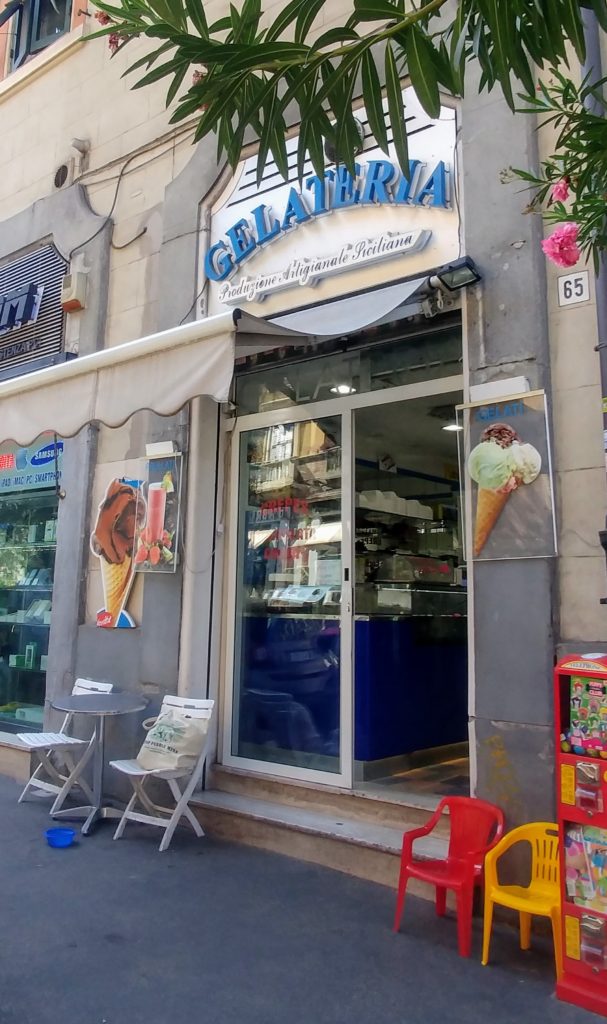
Aperitivo is the “happy hour” that bridges the gap between lunch and the late Italian dinner. It typically includes a cocktail and food, which can either be a small buffet or a plate of assorted appetizers, for €7-10. When we first discovered aperitivo, we treated it like a cheap dinner, often not intending to continue on for another course. But as we’ve tried more restaurants, we have become less satisfied with the quality of the quick food and more interested in the Aperol spritz as a thirst quencher in the summer heat.
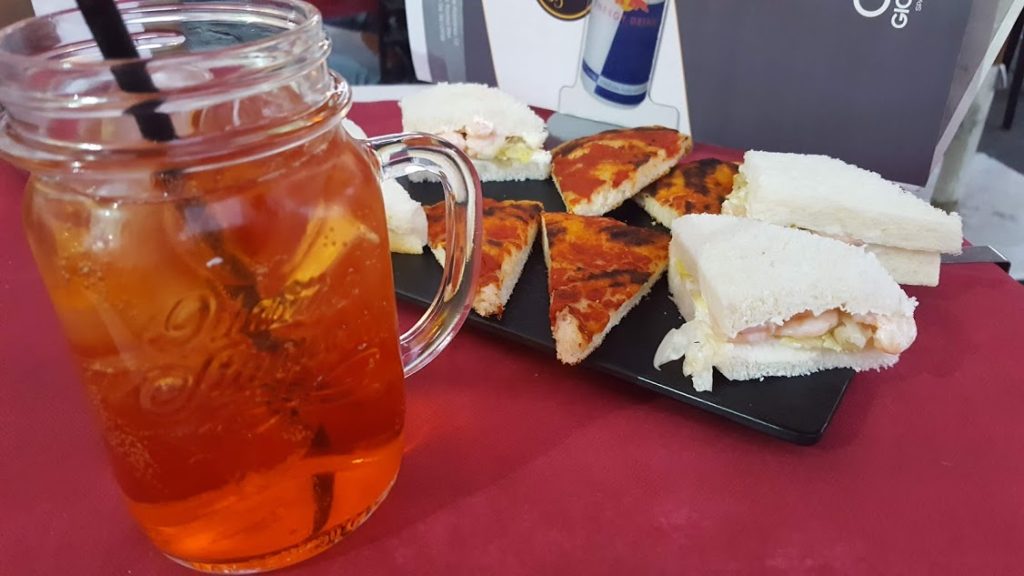
Dinner is also a challenge because there is just so much going on. It’s true that the first several months were dominated by the pizza/pasta juggernaut, but we’re getting to understand some of the nuanced subtleties and are more discerning with our dining euro. There are several good family osterias in the neighborhood that are fun and tasty. They specialize mostly in pasta. And there are several good pizzerias too, though I still miss the surly pizza waiter in our old neighborhood. Lately we’ve been branching out a little. There’s a fabulous fish restaurant a couple of blocks away, and a meat place that always seems busy. We’ve tried some good Thai, Chinese, and Japanese places too. I have a long way to go to be able to speak more definitively about Roman food, but I’m enjoying the process of gaining that expertise. Right now my test meal, by which I compare the quality of pasta places, is carbonara.
Transportation
When we left the United States I was excited to try a lifestyle without owning a car. I’d just sold the three that we owned and was happy to no longer pay for car loans, insurance, gas, and maintenance. And I wouldn’t have to try to justify their environmental costs while commuting 60 miles a day to a job that focused on environmental restoration and sustainability.
Instead, we’re now living in a dense and mature urban environment where public transport is plentiful. (I say mature because the Seattle area is playing a painful catch-up with their public transit system.) An annual transportation pass costs €250 and gets us unlimited access to the subway, trams, buses, and some commuter trains. We use ours everyday. From our house, we’re two short blocks from three bus routes that go to places like the Pantheon, Trevi Fountain, and Termini Railway Station. Another three blocks gets us to two tramlines that take us to the Colosseum, the Vatican, and the Trastevere neighborhood. Of course there are several Apps to help plan the route, but the Moovit app seems the best for predicting bus/tram arrival times. Really, you can get anywhere in the city.
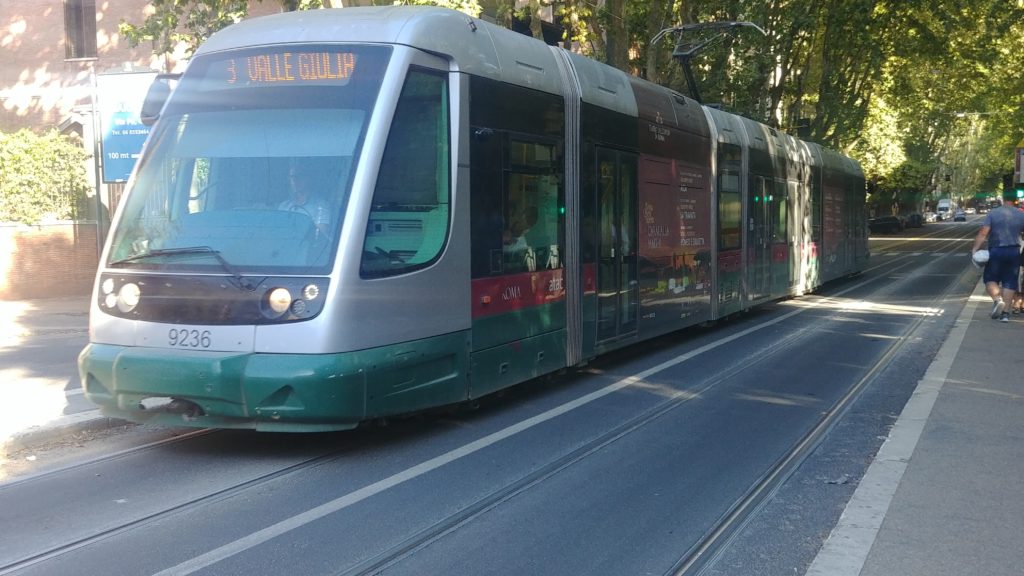
The system isn’t perfect. The transit strikes are not infrequent and the intervals between buses and trams are rarely predictable. Now that the summer is here, some of rides are incredibly warm, especially at rush hour. A third subway line appears on some maps but won’t actually be operational until who-knows-when. On unpleasant commuter days, everyone shrugs and says “Rome is Rome.”
There are several car sharing services in Rome (Car2Go, Enjoy, Share N’Go). Ashley has used two of them for short trips around the city and likes their convenience. But parking is not an insignificant problem. I make jokes that it might take 10 minutes to get there and 20 minutes to find a spot to park the car. But on a recent run where a taxi was quoted at €18, an Enjoy car cost only €5.
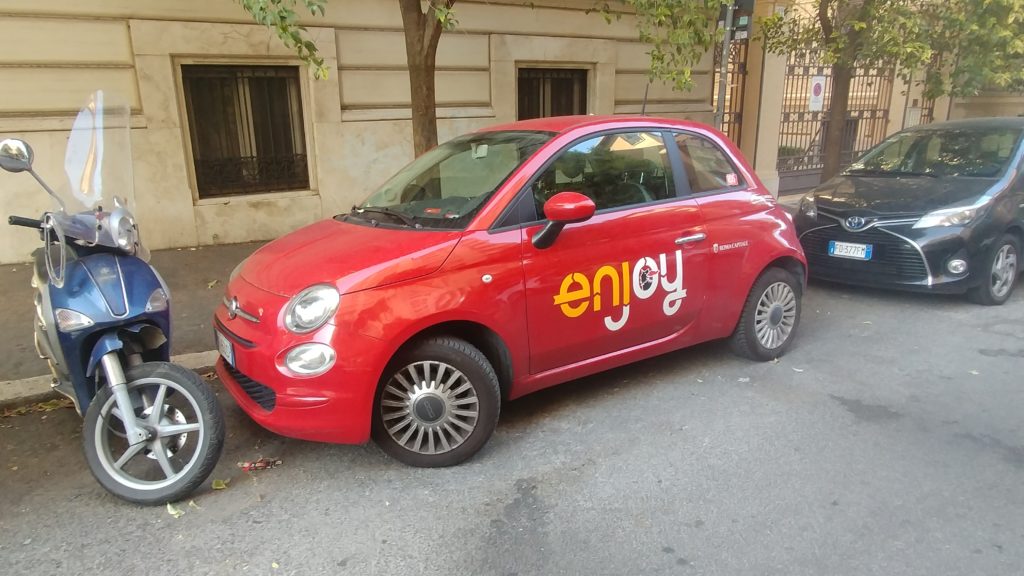
Taxis are plentiful in Rome (of course, there’s an App for that). They should exclusively use a meter, and it generally costs at least €10 to go anywhere. Uber exists here, but it is twice as expensive as a taxi and caters to people needing larger vehicles.
Leaving Rome, we have used the train, buses, and rental cars. Trains are fast and easy and go to all the major towns and points in-between. I took the skibus several times during the winter to pacify my addiction. And we’ve rented cars for both weekend getaways and weeklong vacations. After trial and error, we think we’ve found a local rental company that is convenient and relatively cheap.
Trash
The collection of refuse in Rome continues to baffle me. I have heard that trash collection is administered at a district neighborhood level, meaning that the system could be different from street to street. On our street, and indeed in the surrounding neighborhood, there are frequent separate car-sized receptacles for paper, glass, plastic/metal, organics, recycled clothes, and non-recyclables. This sounds great, right? But the actual process has at least three things wrong with it:
- The bins in our neighborhood are almost always overflowing. Indeed, they are often knee-deep in crud that makes it impossible to get to the bins themselves. There doesn’t seem to be a regular schedule of emptying the bins, and if there is, it is certainly not frequent enough. When they are finally emptied, the overflow is often left behind. Right now I have two big bags of plastic/metal/glass in the kitchen because there is no place in walking distance to put them.
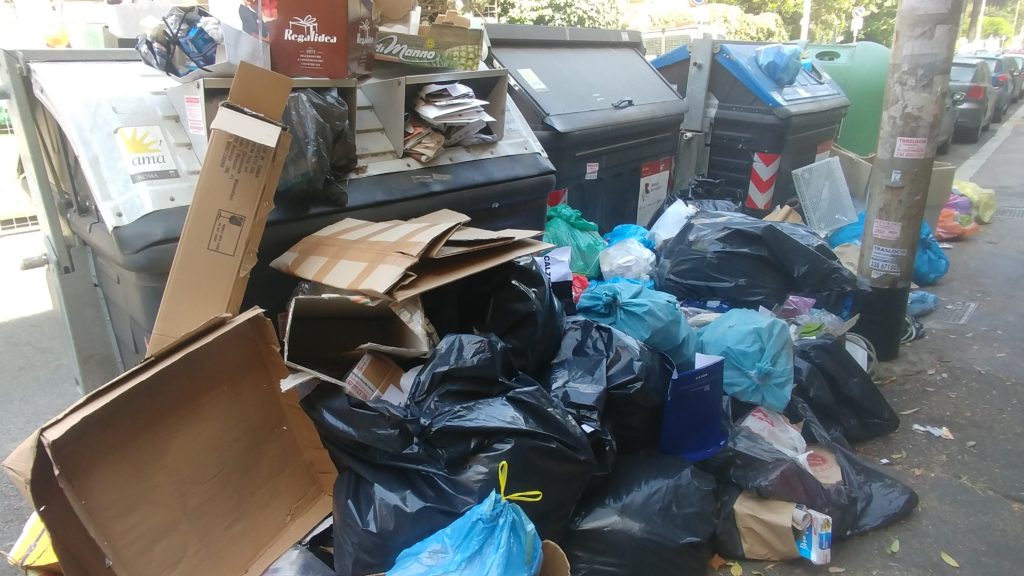
Is this the public utilities’ way of getting the mayor unelected? It smells as good as it looks! - I have no confidence that the separated garbage streams stay separated through the process and are actually recycled. Though most people seem to be following the separation suggestions, a look in any bin at any time shows a corrupted mix of trash. When a second crew comes through to clean up the overflow, they throw it in whichever bin has space. And they’re the ones who are supposed to set the example for the rest of us.
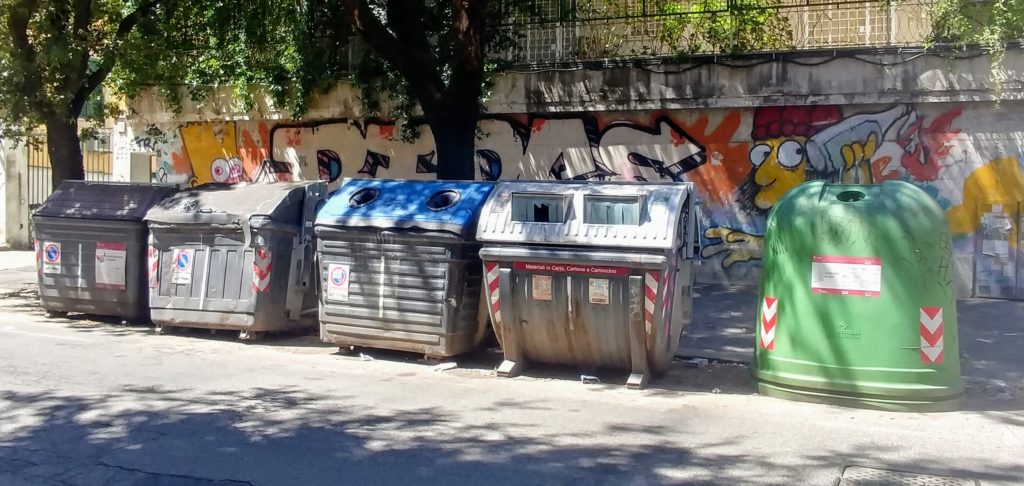
Vote the right way and it could look like this (nevermind the graffiti). - There is just too much urban trash in Rome. I’m constantly picking up small paper receipts, junk mail, and dog shit from the six meters of sidewalk in front of our house. Looking down from the tram platform into a sea of accumulated cigarette butts is disgusting. It is so ubiquitous that I think that it has become invisible to the average resident. I keep expecting to see some official street cleaners, but the only people I see addressing the issue are individual apartment managers sweeping out in front of their building and recent immigrants going block to block for spare change. It is startling whenever I return to Rome from someplace else, even other cities in Italy.
It’s so bad that the Italian Environment Minister promised in July (2019) that all the trash in Rome would be picked up in two weeks. Even if that happens it will still need to be picked up in the following two weeks, and the following two weeks, etc, etc. And that isn’t likely to happen.

